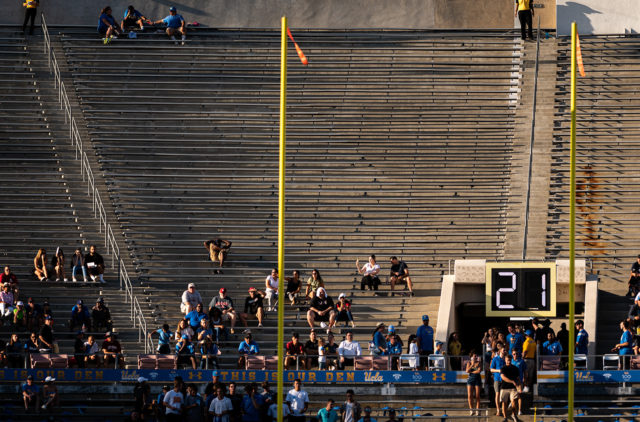This post was updated Oct. 4 at 11:22 p.m.
When I was 7 years old, I wanted to ride the waterslide at my local community pool. I waited my turn in line, but when I got to the top of the stairs, the lifeguard told me that I had to be at least 48 inches tall in order to go on the slide.
It was explained to me by city officials that it simply was not safe for a person under 48 inches tall to ride the slide because of the speed of the slide and the depth of the water.
I went back to the pool a month and a half later. I was a few inches taller then, and almost 4 feet tall. I proudly went to the waterslide, expecting the lifeguard to not think twice about letting me ride.
But the lifeguard still did not let me ride with the other kids.
“It’s slightly safer for me to ride now,” I thought to myself. “Why won’t they let me ride?”
My experience with the waterslide reminds me a lot of what happened with the Pac-12 over the past couple of months. The conference made the right decision when it decided to shut down athletics because of coronavirus risks through at least December 2020.
So why is it changing its mind now? What has changed? Is slightly safer than dangerous really safe?
Less than a month after making the decision to postpone fall sports, the Pac-12 announced a partnership with Quidel Corporation, a company that provides and manufactures diagnostic health care products. While I’m optimistic that Quidel’s accurate rapid testing will be incredibly beneficial for the conference, I’m not sure it will be enough.
The tests will identify which players are infected with COVID-19, but the tests can’t prevent players from changing their lifestyles to conform to a professional sportslike bubble to ensure the most safety possible.
So yes, student-athletes’ testing positive is seemingly inevitable. And while the likelihood that a healthy, college-aged person dies from the coronavirus is statistically less than most other age groups – it’s not zero and that shouldn’t be overlooked – the long-term health effects are still largely unknown. Student-athletes should not be subjected to the possibility of myocarditis just so the conference can have a payday.
These are athletes who will never see a dime of the hundreds of millions of dollars that the conference will. These are athletes who are referred to as “student-athletes,” but when it’s time for the important, money-involved decisions, the first half of the term is nowhere to be found.
The University of California is not anticipating a return to normal operations until September 2021 at the earliest. But that is only for its nonathlete students.
When you look around the nation right now, college football is happening. On the outside, the Pac-12 looks like the conference that was unnecessarily safe. But that doesn’t appear to be the case.
Just six weeks into the season, we have seen over 20 cancellations or postponements, with the Wednesday matchup between Appalachian State and Louisiana being the latest to be postponed when it was announced Thursday. A month into the NFL’s season and we have the first postponement as the Tennessee Titans and the Pittsburgh Steelers’ Week 4 contest was postponed after over a dozen Titans players and staff tested positive for COVID-19.
The Pac-12 was scared of falling behind the other Power Five conferences both financially and in terms of losing highly skilled high school recruits down the line, had the season carried on without any issues. But the season hasn’t played out without blemishes, and the SEC, ACC and Big 12 are putting money before the lives of students.
How badly do we need college football? Badly enough to put the lives of thousands of unpaid young adults in danger for potentially the rest of their lives?
I would say no, but it’s not up to me. It’s up to the people who already deemed it unsafe once.
It’s up to the community pool managers who recognize the risk of a 46-inch-tall kid’s using the waterslide but need the money in order to keep up with the other managers at competing pools.

